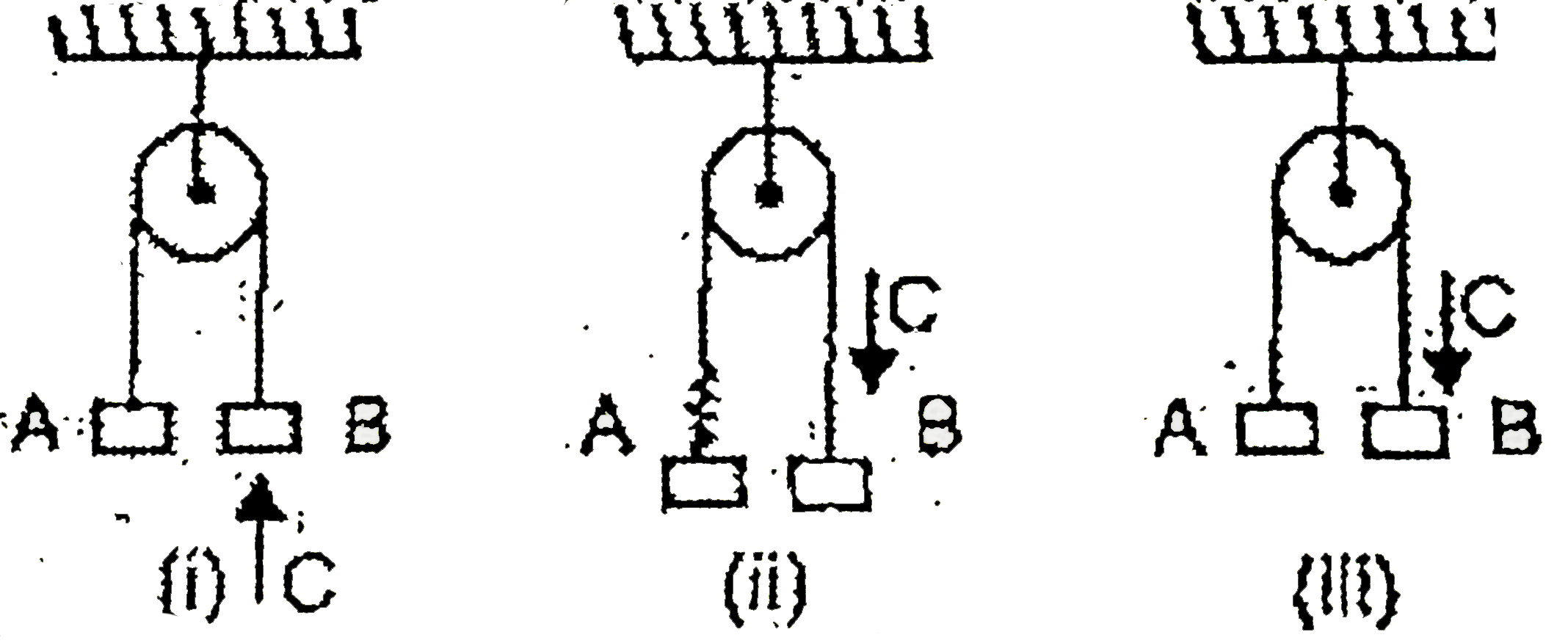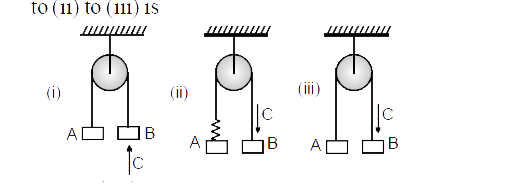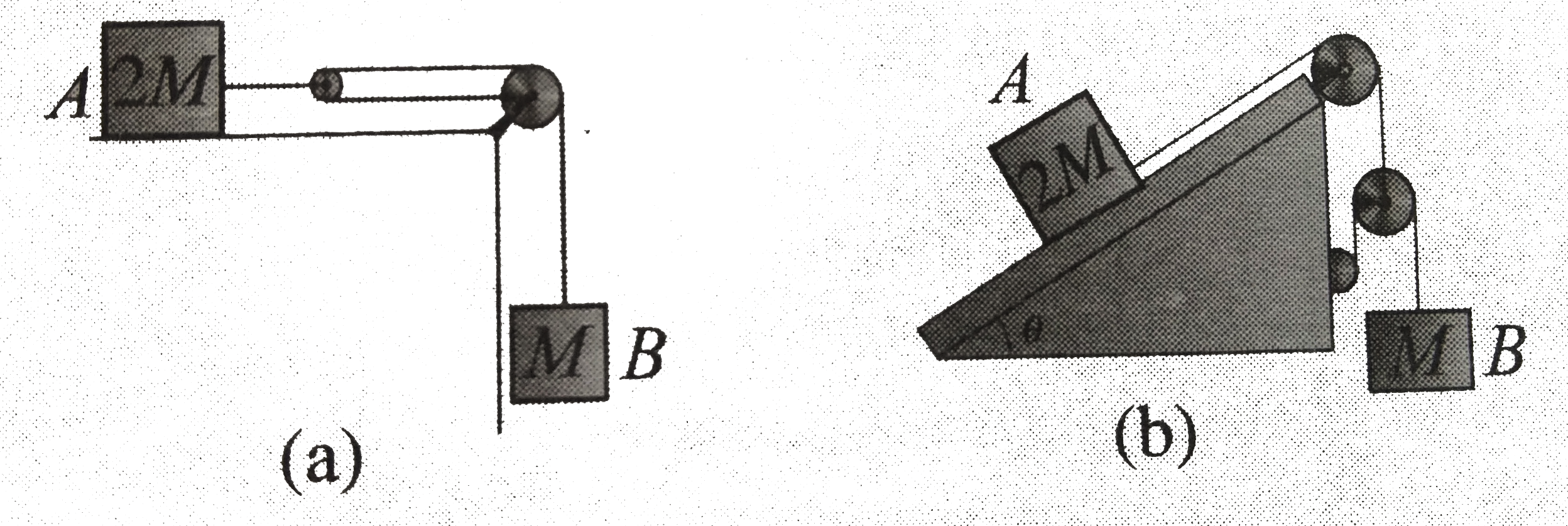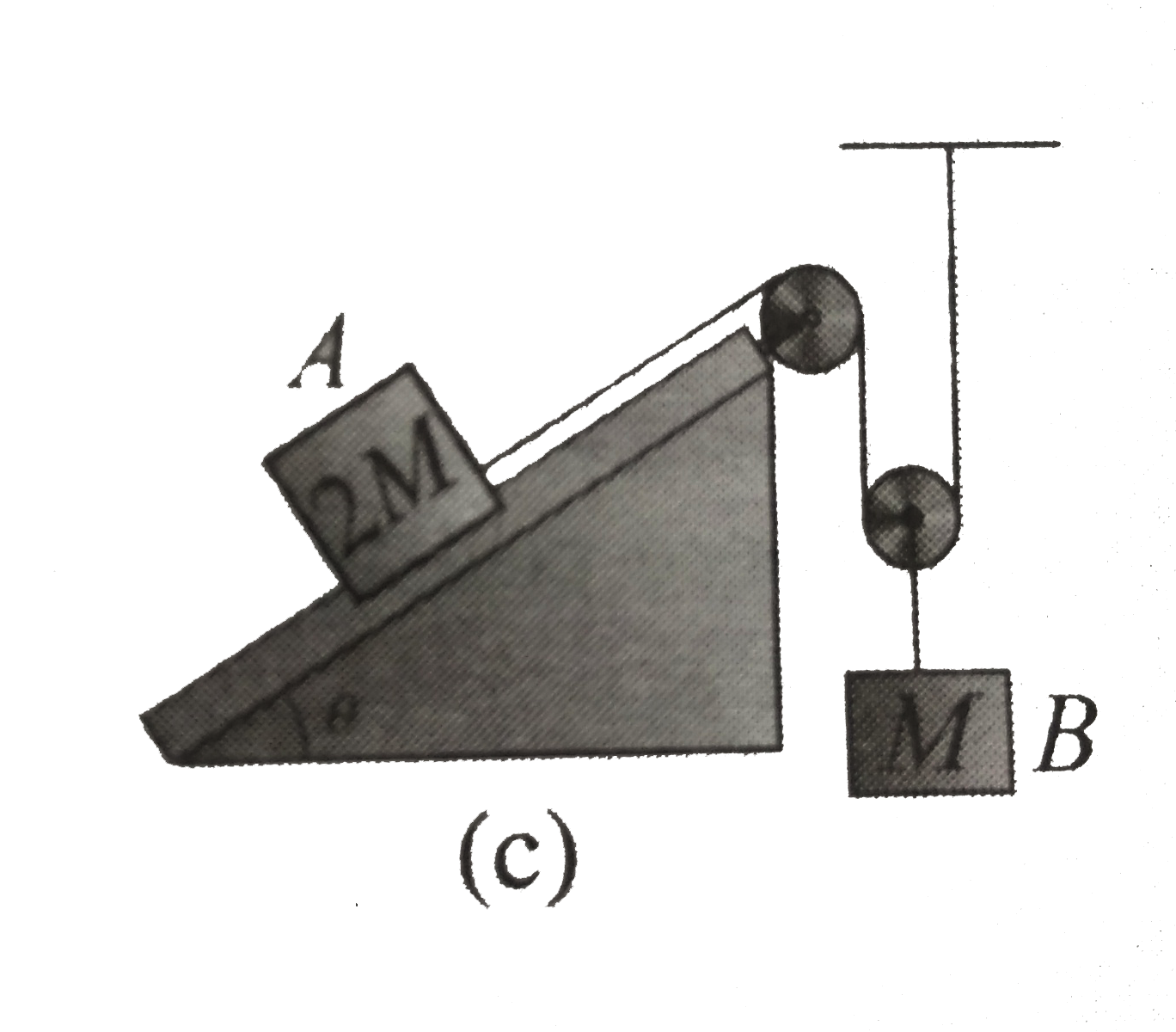In figures (a), (b) and (c) shown, the objects A, B and C are of same mass. String, spring and pulley are massless. C strikes B with velocity u in each case and sticks it. The ratio of velocity of B in case (a) to (b) to (c) is

(a) 1:1:1
(b) 3:3:2
(c) 3:2:2:
(d) 1:2:3
The correct Answer is:B
va=vb=v2
vc=v3
∴va:vb:vc=3:3:2
Topper's Solved these Questions
- CENTRE OF MASS, LINEAR MOMENTUM AND COLLISIONBOOK - DC PANDEYCHAPTER - CENTRE OF MASS, LINEAR MOMENTUM AND COLLISIONEXERCISE - Level 2 More Than One Correct
8 Videos
- CENTRE OF MASS, LINEAR MOMENTUM AND COLLISIONBOOK - DC PANDEYCHAPTER - CENTRE OF MASS, LINEAR MOMENTUM AND COLLISIONEXERCISE - Level 2 Comprehension Based
4 Videos
- CENTRE OF MASS, LINEAR MOMENTUM AND COLLISIONBOOK - DC PANDEYCHAPTER - CENTRE OF MASS, LINEAR MOMENTUM AND COLLISIONEXERCISE - Level 2 Single Correct
23 Videos
- CENTRE OF MASS, IMPULSE AND MOMENTUMBOOK - DC PANDEYCHAPTER - CENTRE OF MASS, IMPULSE AND MOMENTUMEXERCISE - Comprehension type questions
15 Videos
- CIRCULAR MOTIONBOOK - DC PANDEYCHAPTER - CIRCULAR MOTIONEXERCISE - Medical entrances s gallery
19 Videos
Similar Questions
In the figure (i), (ii) and (iii) shown the objects, A,B and C are of same mass. String, spring and pulley are massless. C strikes B with velocity u in each case and stricks to it. The ratio of velocity of B in case (i) to (ii) to (iii) is-

View SolutionIn the figure (i), (ii) & (iii) shown the objects A, B & C are of same mass. String, spring & pulley are massless. C strikes B with velocity ‘u’ in each case and sticks to it. The ratio of velocity of B in case (i) to (ii) to (iii) is

View Solution
Knowledge Check
A bullet of mass A and velocity B is fried into a block of mass C and sticks to it. The final velocity of the system equals
AA+BCABAA+CBCA+CBDAA+BBA body of mass a moving with a velocity b strikes a body of mass c and gets embered into it. The velocity of the systems after collision is
Aa+cabBaba+cCab+cDaa+bIn the systems shown in figure (A), (B), (C) and (D), the scales of the springs are calibrated in newton

Assume that
Pulleys are massless and frictionless
Strings are massless
The surface in figure (D) is frictionless
Reading of the spring scale in figure (B) isA90 NB62.5 NC55 ND75 N
Calculate the acceleration of block A and B in cases (a),(b), and (c ).



View SolutionCalculate the acceleration of block A and B in cases (a),(b), and (c ).



View SolutionTwo masses 2m and m are connected by an inextensible light string. The string is passing over a light frictionless pulley. The mass 2m is resting on a surface and mass m is hanging in air as shown in the figure. A particle of mass m strikes the mass m from below and with a velocity v0 and sticks to it. In another case a particle of mass m strikes the mass m with a velocity v) from top and sticks to it. Calculate the ratio of velocities of mass m just after collision in first and second case.
View SolutionA body of mass a moving with a velocity b strikes a body of mass c and gets embedded into it. The velocity of the systems after collision is
View SolutionIn the systems shown in figure (A), (B), (C) and (D), the scales of the springs are calibrated in newton

Assume that
Pulleys are massless and frictionless
Strings are massless
The surface in figure (D) is frictionless
Reading of the spring scale in figure (C) is
View Solution
